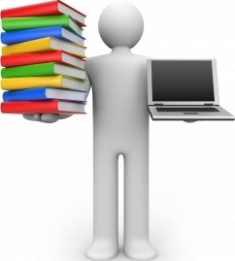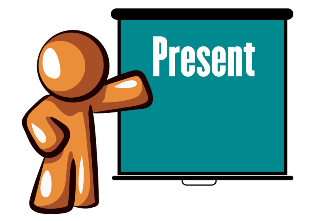“It has become appallingly obvious that our technology has exceeded our humanity”
The words which were said by Albert Einstein defined the information technology very well. The Role of Information Technology in Education is exploring the prospective for technology to define the terms of teaching and learning in a better way but some questions are raised.
- Can the tools of technology, appropriately used, break through the obstructions to educational progress?
- What restrains the effective use of technology?
- What are the distinguished and the real limits of the Information Technology?

Tools of the Information Technology which are used in Education
There are so many tools are being used in technology integration. Some example of these tools are:
Interactive whiteboards: Interactive whiteboards are being in many schools as replacements for standard whiteboards and provide a way to allow students to interact with material on the computer or by the directly connected to the internet. In addition, some interactive whiteboards software permits teachers to record their instruction and post the material for review by students at a later time.
• 3D virtual environments are also used with interactive whiteboards as a right path for students to interact with 3D virtual learning in aspect of virtual world objects employing kinetics and haptic touch the classroom. An example of the use of this 3D virtual is the open-source project Edusim.
• A result has been came out by the Decision Tree Consulting (DTC), a worldwide research company that, interactive Whiteboards continue to be the biggest technology revolution in classrooms, across the world there are over 1.2 million boards installed, over 5 million classrooms are predict to have Interactive Whiteboards installed , Americas are the most biggest region closely followed by EMEA, and Mexico’s Enciclomedia project to equip 145,000 classrooms is worth $1.8 billion and is the largest education technology project in the world.
• Interactive whiteboards can contain different learning styles, such as visual, tactile, and audio

Student Response Systems: Student response systems is a handheld remote control units, or retort pads, which are operated by individual students. A student can operate it by itself only. In this unit an infrared or radio frequency receiver is attached to the teacher's computer and collects the data which is submitted by students.
The CPS (Classroom Performance System), this is the unit which allows the teacher to pose a question to students in several formats. After posing the question Students use the response pad to send their answer to the infrared sensor. After that Data is collected by the user from these systems is available to the teacher in real time and can be presented to the students in a graph form on an LCD projector. The teacher can also entrance a variety of reports to collect and analyze student data. These systems have been used in higher education science courses since the 1970.
Audience Response Systems (ARS) this unit can help teachers evaluate, and act upon student feedback more efficiently. For example, with polleverywhere.com, students text in answers via mobile devices to warm-up or quiz questions. The student along with the whole class can quickly view collective responses to the multiple-choice questions electronically, allowing the teacher to differentiate instruction and learn where students need help most.
Some other aspect of this unit is that when students answer an in-class conceptual question individually, then discuss it with their neighbors, and then vote again on the same or a conceptually similar question, the percentage of correct student responses usually increases, even in groups where no student had given the correct answer previously. Among other tools that have been noted as being effective as a way of technology amalgamation are podcasts, digital cameras, smart phones, tablets, digital media, and blogs.
Effective uses of the Information Technology
The most effective use of the Information technology skills successfully within each and every student study or work activities involves applying your skills suitably in different situations, reflecting on your performance and identifying how you might improve in the future. For the assessment work, every student will need to show that you can use information technology to handle text, images and numbers. Improving students IT skills engages planning what every student hope to achieve, using your skills and monitoring how things are going, and standing back at critical points to reflect on student’s performance.
It is important to forecast the assessment work and carefully think about what students need to present as evidence. But need to make sure the work which students are doing provides opportunities for them to practice and apply their IT skills and the work student be set to to present for assessment includes handling text, images and numbers. Student need to take time to practise and apply their skills over a period of time.
Limits of the Information Technology
Now these days every person believes that because computers and the Internet has become such a regular part of modern life, the larger amount of our community particularly children who grow up with it, will not be able to function without it. The survey that the Internet is making people lazy, particularly when it comes to essay or project research as instead of reading books in a library, one can just perform a Google search.
Technology in an organization, company or business or in a school the number of hours that a human works at that company is reduced and the way the teacher teach the student also reducing the efficiency. Because of that the result is in some people losing their jobs just because technology is doing it for them so the unemployment getting increases.Some work which is done by people can ot be handle by the computer or other tools.
Momentous of IT in Education
- Admittance to variety of learning resources
In the period of technology. IT aids plenty of resources to improve the teaching skills and learning ability. IT is helping to make things easy to provide audio visual education. The learning resources are being broadens and widen. Now with this bright and vast technique as part of the IT curriculum, learners are expectant to regard computers as tools to be used in all aspects of their studies. In the continuation of this, they need to make use of the new multimedia technologies to communicate ideas, describe projects, and order information in their work.

IT has provided closeness to education. In this the era of computers and web networks the velocity of imparting knowledge is very fast and each and every person can be educated anywhere at any time. New IT has often been initiated into well-established patterns of working and living without fundamentally altering them.
- Learning any time at any place
The one who cannot go for a class or for the direct education can use the information technology as a supplement. Each and every person can educate from anywhere or anytime with the mobile app.